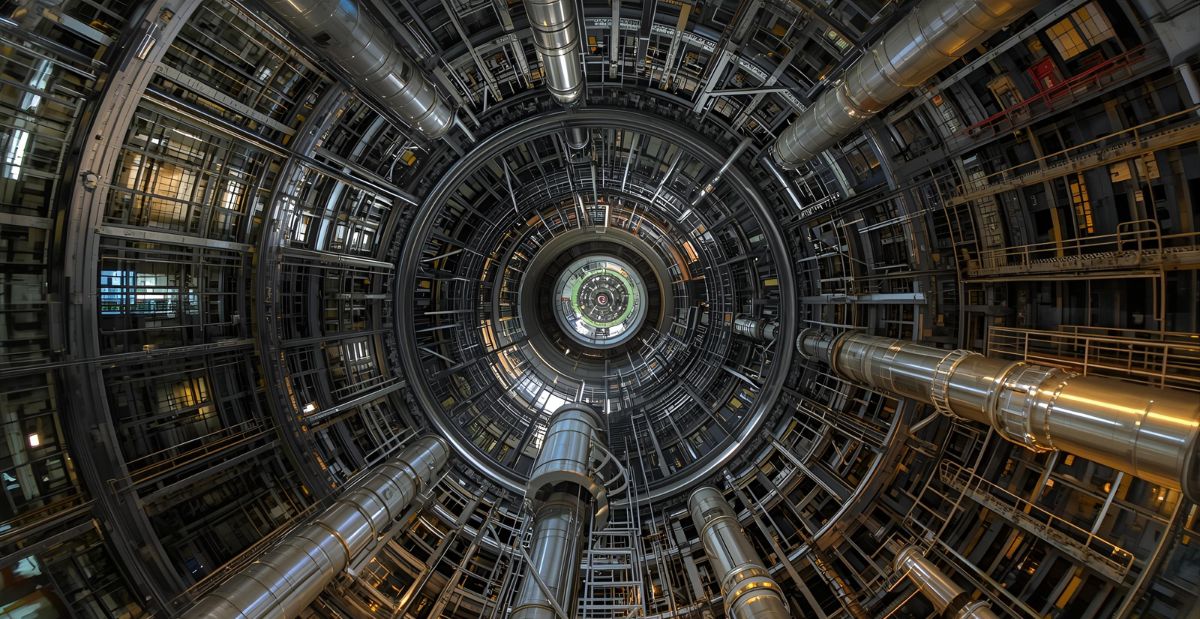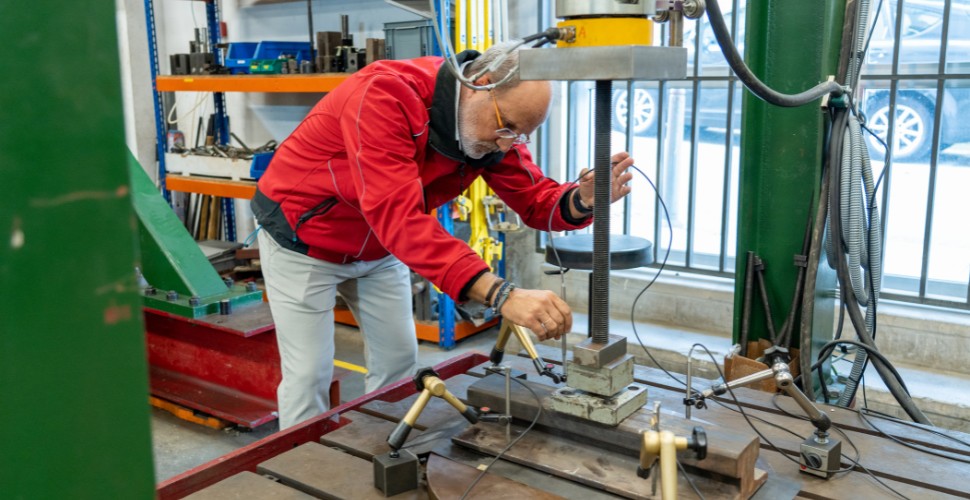
LADICIM and Acciona Develop a Solution to Reduce Train Noise and Vibration Emissions Using Recycled Tires
The results of the industrial PhD thesis have been recognized with an award in the first call of the Innovation Chair Project at the University of Cantabria.
One of the main challenges faced by high-speed rail lines, conventional railways, and metro systems is the transmission of vibrations caused by passing trains, both on ballast tracks and on concrete slab tracks. This issue affects passenger comfort and generates acoustic impact that negatively affects the quality of life of people living near railway infrastructure.
To find potential solutions, LADICIM and Acciona signed a collaboration agreement and developed a research project that later evolved into an Industrial PhD thesis. The thesis’s strong sustainability focus also enabled access to European funding through the LIFE Programme for Environment and Climate Action. The thesis, titled “Development of Environmentally Friendly Elastomers for Railway Track Applications”, was defended by Faiver Botello, Innovation Manager at Acciona, and supervised by LADICIM researchers José Antonio Casado and Isidro Carrascal.
The aim of the research was to develop and validate, both in the lab and in the field, an elastomeric mat for ballast tracks—where the railway superstructure rests on aggregates—and an elastic pad for slab track systems, both made from end-of-life tires (ELTs). This material was chosen because it is one of the waste products that has generated the most environmental concern in recent years. According to the 2015 annual report by the European Tyre and Rubber Manufacturers’ Association (ETRMA), 2.6 million tonnes of tires reach the end of their useful life each year in Europe alone, awaiting a secondary use.
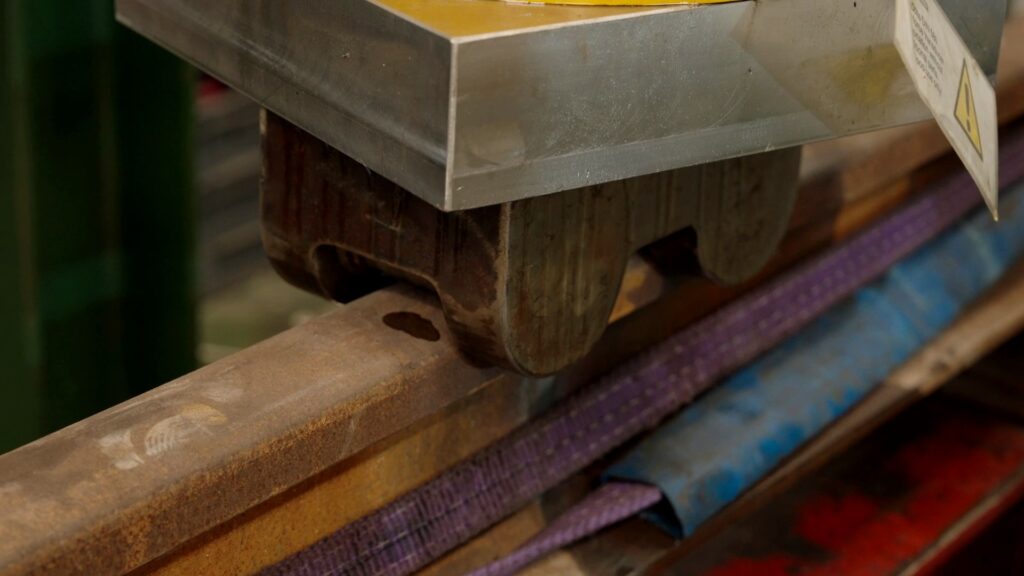
The thesis aimed, on one hand, to demonstrate the environmental benefits of recovering a large volume of end-of-life tires (ELTs), and on the other, to develop and validate the technical feasibility of a new environmentally friendly elastic material. This material was formulated from a blend of used tire granules and resins for railway applications, offering an innovative alternative to costly commercially available products.
It is estimated that the final solution allows the reuse of 7 tires per linear meter of under-ballast mat and between 0.3 and 0.5 tires per linear meter for elastic pads in slab track systems with sleepers.
The materials were first tested at LADICIM to assess the long-term performance and durability of the developed components under loads simulating train traffic. Finally, two full-scale test sections were built and monitored. One was located in the Cabanyal tunnel (Valencia), where an elastic pad for slab track was tested, in which the track superstructure is supported on concrete slabs. The other was in a rail yard in Aranda de Duero (Burgos), where an elastomeric mat for ballast tracks was evaluated.
In both cases, the results were satisfactory, leading Acciona to patent the solutions. This has enhanced the company’s ability to offer alternative and competitive solutions—both technically and economically—compared to conventional products.
Innovation Chair Award from the University of Cantabria
The project developed by LADICIM and Acciona was the only thesis awarded in the first edition of the Innovation Chair Project awards at the University of Cantabria, which recognized 23 initiatives—selected from over 100 submissions—for their ability to generate and develop innovations applicable to the productive sector.
Over the past four years, LADICIM has submitted five industrial PhD theses in collaboration with various partners, covering topics such as material processing design and optimization, or monitoring techniques to improve the structural integrity of components. The Laboratory’s strong collaboration with companies from various sectors—not only for testing and certifying materials but also for developing R&D projects—has enhanced its capacity for knowledge transfer through market-oriented projects, thereby giving back to society part of what it invests in the university. This collaboration is also one of LADICIM’s main sources of funding to purchase and maintain laboratory equipment and to create professional development opportunities for emerging researchers.
Through the Industrial PhD program, LADICIM has collaborated with companies from various sectors to develop a wide range of applied research projects. Some recent examples include:
"Structural Redundancy in Steel and Composite Bridges in the Presence of Cracks" (2023)
PhD Candidate: Manuel Ángel Díaz García
Company & Position: WSP Spain, Structural Analysis Engineer
Supervisor: Sergio Cicero
"Construction Analysis and Long-Term Critical Stresses of Steel Fiber Reinforced Concrete in Wind Turbine Towers" (2023)
Company & Position: INGECID, Engineer in the Projects Department
Supervisors: Carlos Thomas, Jesús Setién
"Development of Environmentally Friendly Elastomers for Railway Track Applications" (2022)
PhD Candidate: Faiver Botello Rojas
Company & Position: ACCIONA Infraestructuras, Lead Project Manager
Supervisors: José A. Casado, Isidro Carrascal
‘Design and applicability of an integrated system for railway sleepers monitoring’ (2021).
PhD Candidate: María Ángeles Sánchez Pérez
Company & Position: PCM RAIL ONE, Segment Manager Engineering
Supervisors: José A. Casado, Stephan Freudenstein
"Application of Machine Learning Algorithms for the Optimization of the Steel Manufacturing Process in an Electric Arc Furnace" (2021)
PhD Candidate: Estela Ruiz Martínez
Company & Position: GLOBAL STEEL WIRE, Technical Management
Supervisors: Diego Ferreño, Miguel Cuartas
"Elastic Steel Baseplate for Railway Fastening Systems" (2019)
PhD Candidate: Alejandro Pérez Núñez
Company & Position: CENTRO TECNOLÓGICO DE COMPONENTES, Projects Coordinator, Digital Twins Technology
Supervisors: Isidro Carrascal, Juan A. Polanco, Sergio Cicero
"Development of Elastomeric Material from End-of-Life Tires for High Vibration Attenuation in Embedded Rail Slab Track Systems" (2015)
PhD Candidate: Jorge Gómez Hoyos
Company & Position: ACCIONA Infraestructuras, Innovation Manager
Supervisors: José A. Casado, Isidro Carrascal
Advantages of Recycled Concrete
Recycled concrete offers a range of technical and environmental advantages that position it as a sustainable alternative to traditional concrete. From a technical standpoint, when properly processed and applied, recycled aggregates can deliver properties comparable to conventional concrete in terms of strength and durability. This has been supported by research demonstrating its performance, provided that established proportions and standards are followed.
From an environmental perspective, recycled concrete significantly contributes to reducing the ecological impact of construction. Its use can decrease the demand for natural aggregates by up to 20%, reducing pressure on natural resources and preventing the massive generation of waste. Moreover, this material efficiently manages construction and demolition debris, effectively closing the life cycle of materials.
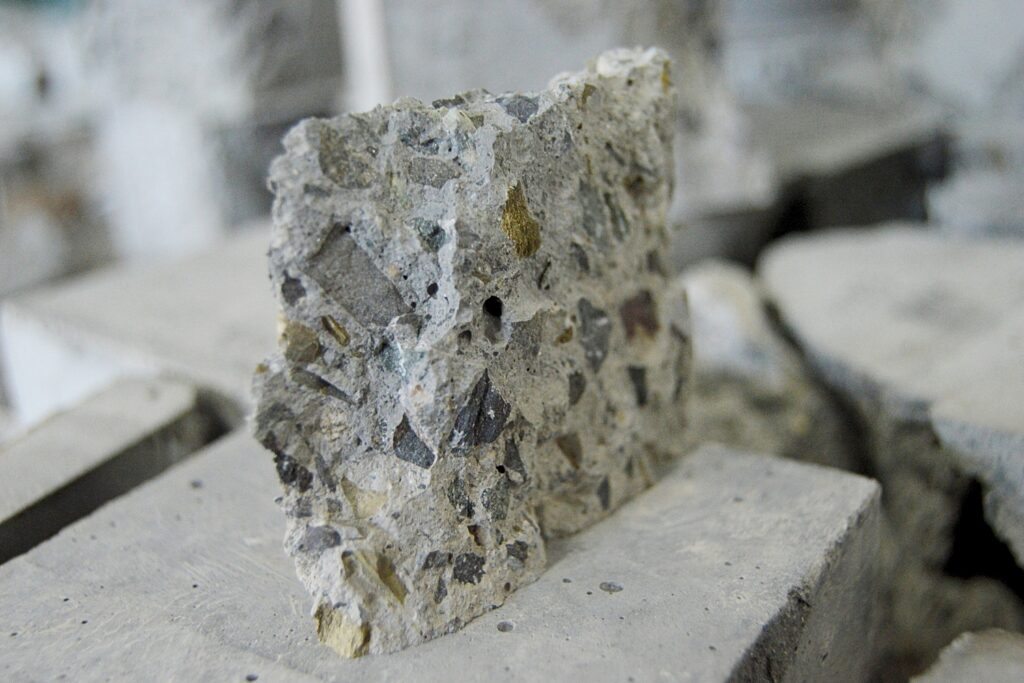
Challenges to Its Implementation
The large-scale adoption of recycled concrete faces challenges that require technical, economic, and regulatory attention. One of the main issues is ensuring the quality and consistency of the material. The inherent variability of recycled aggregates, depending on their source and treatment, makes it difficult to achieve uniform properties, which demands strict control throughout the recycling process—from sorting to treatment. This need increases operational costs and requires significant investment in advanced processing and sorting technologies.
From a regulatory standpoint, although frameworks such as Annex N of Eurocode 2 are being developed, the lack of harmonized and standardized regulations at the European level has limited user confidence in the material. Adding to this is the insufficient recycling infrastructure. In Spain, for example, less than 15% of construction and demolition waste is recycled—and mostly for low-responsibility applications.
This problem is further compounded in regions where natural aggregates are abundant and more affordable. Finally, the lack of widespread economic incentives—such as tax benefits or penalties for landfilling—slows down the transition toward the use of this material. Overcoming these challenges will require a coordinated effort in technological innovation, effective regulation, and market awareness.
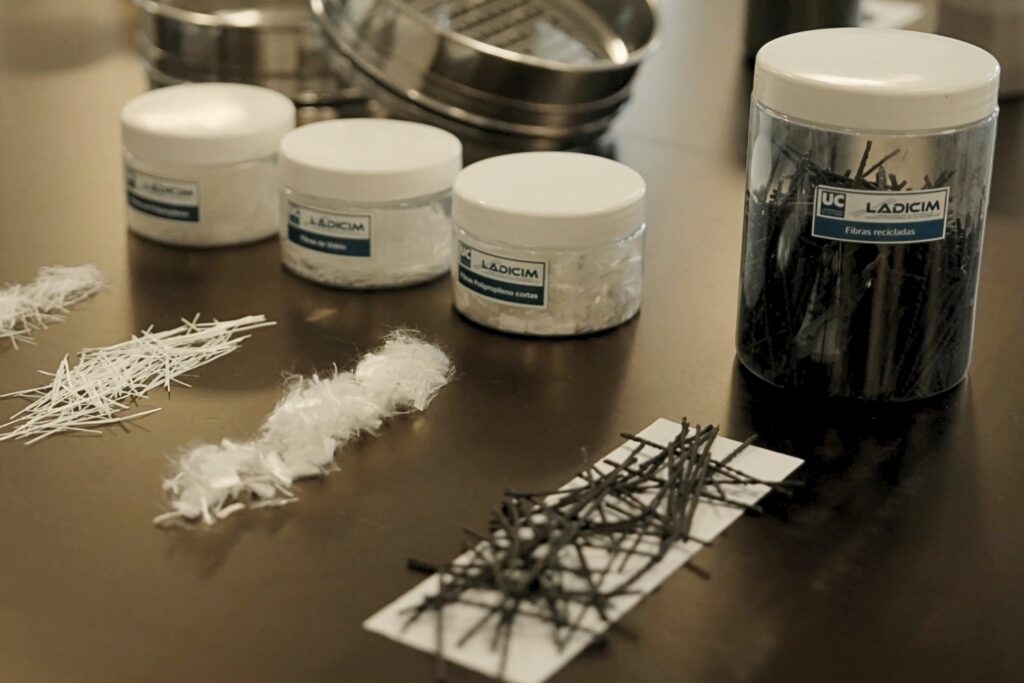
Guarantees for Its Integration into the Construction Industry
To ensure the safety and durability of recycled concrete, strict quality controls on recycled aggregates are essential, guaranteeing that they come from structural concrete and are free from impurities such as wood or metals. Regulations like Annex 15 of the Spanish EHE-08 standard—and now the Structural Code—limit the proportion of recycled aggregates to 20% in structural applications, ensuring properties equivalent to those of conventional concrete. Additionally, laboratories such as LADICIM conduct rigorous technical tests to verify compressive strength, durability under freeze-thaw cycles, water permeability, and bond performance with reinforcement bars, ensuring reliable performance under demanding conditions.
Recycled concrete must also be adapted to the specific environments in which it will be used—such as coastal areas or locations exposed to chemical agents—by adjusting its composition to meet contextual requirements. The traceability and certification of recycled aggregates, supported by CE marking, are essential to ensure compliance with technical standards. Furthermore, innovations such as additives that enhance bond strength and treatments that reduce porosity increase the material’s quality and durability, enabling recycled concrete to compete with traditional concrete in terms of safety and performance.


